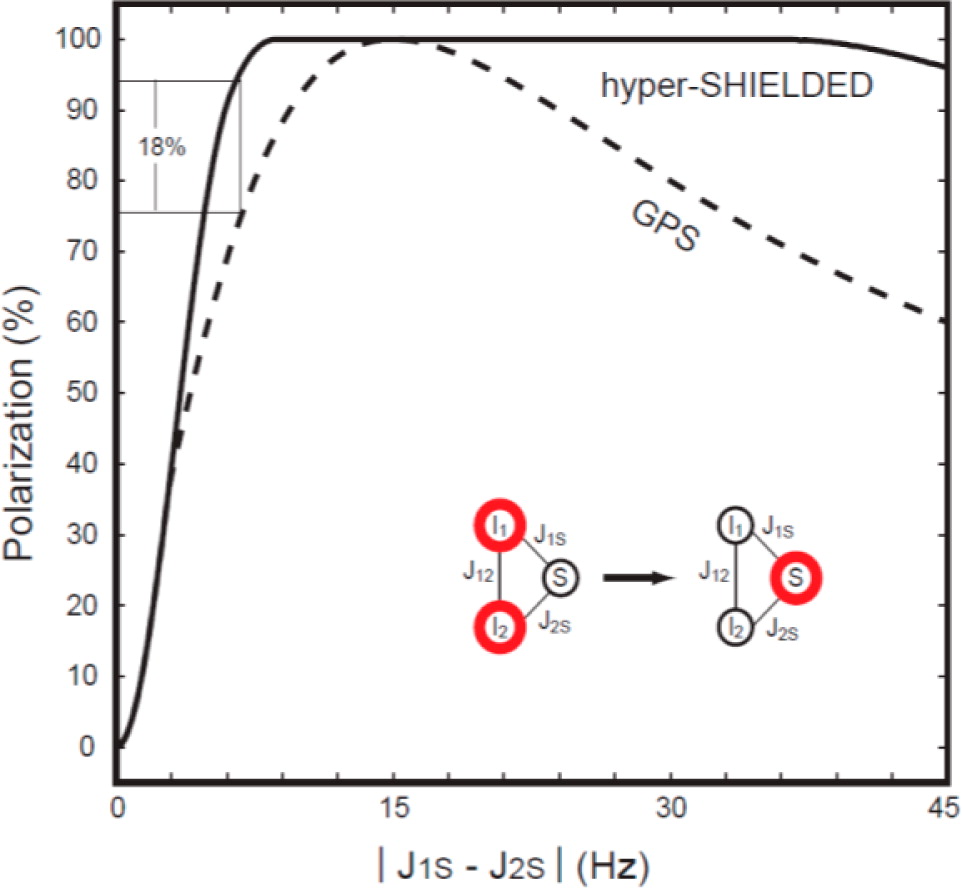Description of Technology Hyperpolarization of nuclear spin ensembles has increased NMR sensitivity to a level that is now enabling detection of metabolism in biological tissue on a time-scale of seconds. The most developed of these technologies, DNP (dynamic nuclear polarization), in particular has already been used to detect, grade, and monitor response to therapy in tumors. These encouraging developments have demonstrated the overall viability of NMR based hyperpolarized methods for the study of in vivo metabolism, and are naturally spurring development in alternative methods of hyperpolarization, such as parahydrogen induced polarization (PHIP). Polarization yields from the less mature PHIP technology are similar to DNP, and are achieved at significantly reduced instrumental complexity and expense, but many complementary advances are still required before PHIP can achieve its potential as a diagnostic imaging modality. One such necessary advancement is an efficient method for transforming parahydrogen spin order into heteronuclear magnetization at low field in arbitrary spin systems. Such a method would enable emerging contrast agents to be used for biomedical applications. Previous attempts at solving this problem have either been too narrowly focused for broad application, or have been too cumbersome to apply for optimal results. The present invention is a pulse sequence that efficiently transforms parahydrogen spin order into heteronuclear magnetization. This was achieved via a single streamlined sequence without recursive application, by finding sequential analytic solutions to the density matrix evolution for each of four independent intervals that collectively flank two proton inversions and one heteronuclear excitation. The name hyper-SHIELDED (Singlet to Heteronuclei by Interative Evolution Locks Dramatic Enhancement for Delivery) reflects the sequence's protective effect on PHIP hyperpolarization. Performance was validated experimentally by in situ detection of carbon-13 in the parahydrogen addition product, 2-hydroxyethyl 1-13C-propionate-d3, where an enhancement of approximately 5x106, was observed relative to Boltzmann polarization at the static field of 48 mT. We anticipate that this transfer sequence will enable efficient protection of parahydrogen spin order across a broad range of emerging PHIP-based sensors for measuring metabolic reaction flux in vivo. Figure:Dependence of theoretical polarization transfer efficiency on heteronuclear coupling constant asymmetry |J1S -- J2S| using the hyper-SHIELDED sequence (solid) versus a nonrecursive implementation of the GPS comparison sequence.The τ intervals were optimized to produce maximum polarization for each sequence at a common value of J12 of 7.5 Hz (Cai et al., J. Phys. Chem. B 2013). Intellectual Property Status A U.S. Provisional Patent Application has been filed. Publication:Cai et al., J. Phys. Chem. B 2013, 117, 1219-1224.




